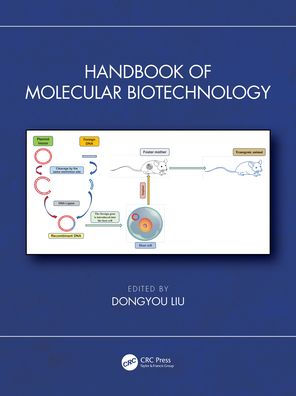While molecular biotechnology offers unlimited opportunities for improving human health and well-being, animal welfare, agricultural innovation and environmental conservation, a dearth of high quality books that have the clarity of laboratory manuals without distractive procedural details and the thoroughness of well-conversed textbooks appears to dampen the enthusiasm of aspiring students. In attempt to fill this glaring gap, Handbook of Molecular Biotechnology includes four sections, with the first three presenting in-depth coverage on DNA, RNA and protein technologies, and the fourth highlighting their utility in biotechnology. Recognizing the importance of logical reasoning and experimental verification over direct observation and simple description in biotechnological research and development, the Introduction provides pertinent discussions on key strategies (i.e., be first, be better, and be different), effective thinking (lateral, parallel, causal, reverse, and random), and experimental execution, which have proven invaluable in helping advance research projects, evaluate and prepare research reports, and enhance other scientific endeavors.
Key features
- Presents state-of-the-art reviews on DNA, RNA and protein technologies and their biotechnological applications
- Discusses key strategies, effective thinking, and experimental execution for scientific research and development
- Fills the gap left by detailed-ridden laboratory manuals and insight-lacking standard textbooks
- Includes expert contributions from international scientists at the forefront of molecular biotechnology research and development
Written by international scientists at the forefront of molecular biotechnology research and development, chapters in this volume cover the histories, principles, and applications of individual techniques/technologies, and constitute stand-alone, yet interlinked lectures that strive to educate as well as to entertain. Besides providing an informative textbook for tertiary students in molecular biotechnology and related fields, this volume serves as an indispensable roadmap for novice scientists in their efforts to acquire innovative skills and establish solid track records in molecular biotechnology, and offers a contemporary reference for scholars, educators, and policymakers wishing to keep in touch with recent developments in molecular biotechnology.
While molecular biotechnology offers unlimited opportunities for improving human health and well-being, animal welfare, agricultural innovation and environmental conservation, a dearth of high quality books that have the clarity of laboratory manuals without distractive procedural details and the thoroughness of well-conversed textbooks appears to dampen the enthusiasm of aspiring students. In attempt to fill this glaring gap, Handbook of Molecular Biotechnology includes four sections, with the first three presenting in-depth coverage on DNA, RNA and protein technologies, and the fourth highlighting their utility in biotechnology. Recognizing the importance of logical reasoning and experimental verification over direct observation and simple description in biotechnological research and development, the Introduction provides pertinent discussions on key strategies (i.e., be first, be better, and be different), effective thinking (lateral, parallel, causal, reverse, and random), and experimental execution, which have proven invaluable in helping advance research projects, evaluate and prepare research reports, and enhance other scientific endeavors.
Key features
- Presents state-of-the-art reviews on DNA, RNA and protein technologies and their biotechnological applications
- Discusses key strategies, effective thinking, and experimental execution for scientific research and development
- Fills the gap left by detailed-ridden laboratory manuals and insight-lacking standard textbooks
- Includes expert contributions from international scientists at the forefront of molecular biotechnology research and development
Written by international scientists at the forefront of molecular biotechnology research and development, chapters in this volume cover the histories, principles, and applications of individual techniques/technologies, and constitute stand-alone, yet interlinked lectures that strive to educate as well as to entertain. Besides providing an informative textbook for tertiary students in molecular biotechnology and related fields, this volume serves as an indispensable roadmap for novice scientists in their efforts to acquire innovative skills and establish solid track records in molecular biotechnology, and offers a contemporary reference for scholars, educators, and policymakers wishing to keep in touch with recent developments in molecular biotechnology.

Handbook of Molecular Biotechnology
762
Handbook of Molecular Biotechnology
762
